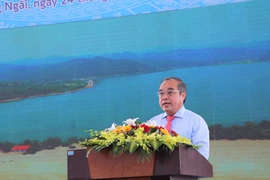In December 2022, the site was recognised as a special national relic by thePrime Minister.
It consists of six locations, namely Thanh Duc, LongThanh, Phu Khuong, Champa cultural relic complex, An Khe swamp, and An Khe damon Cua Lo river. The protected area includes Zone I and Zone II, coveringan area of over 500ha.
The site in the dossiers to be submitted to UNESCO willcover additional four areas, namely Sa Huynh (sea gate), Ly Son (island),Binh Son (ancient ship graveyard), and Son Ha (mountain valley) which possessexceptional global significance from historical, aesthetic, ethnological, oranthropological perspectives, contributing to the diverse ecological andcultural landscape of Sa Huynh inhabitants.
In 1909, French archaeologist M. Vinet discoveredantiquities of the Sa Huynh civilisation. These ancient artifacts firstappeared about 3,000 years ago and ended in the first century AD. Throughdifferent excavations, archaeologists continually found traces of acivilisation, including about 500 burial jars containing many accompaniments,across the coastal central, southeastern, and Central Highlands regions.
Among those localities, Quang Ngai isconsidered the cradle of the Sa Huynh civilisation as it is home to 26relic sites among the over 80 ones discovered and excavated./.




























